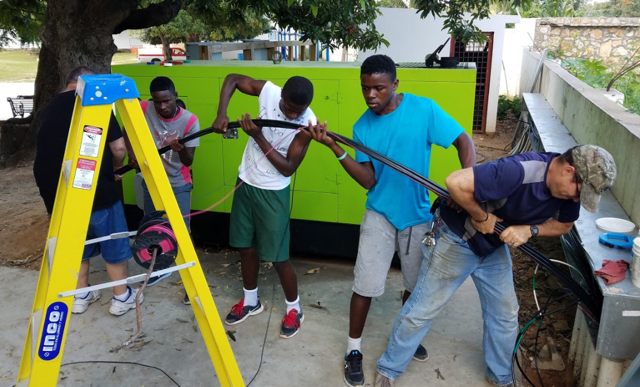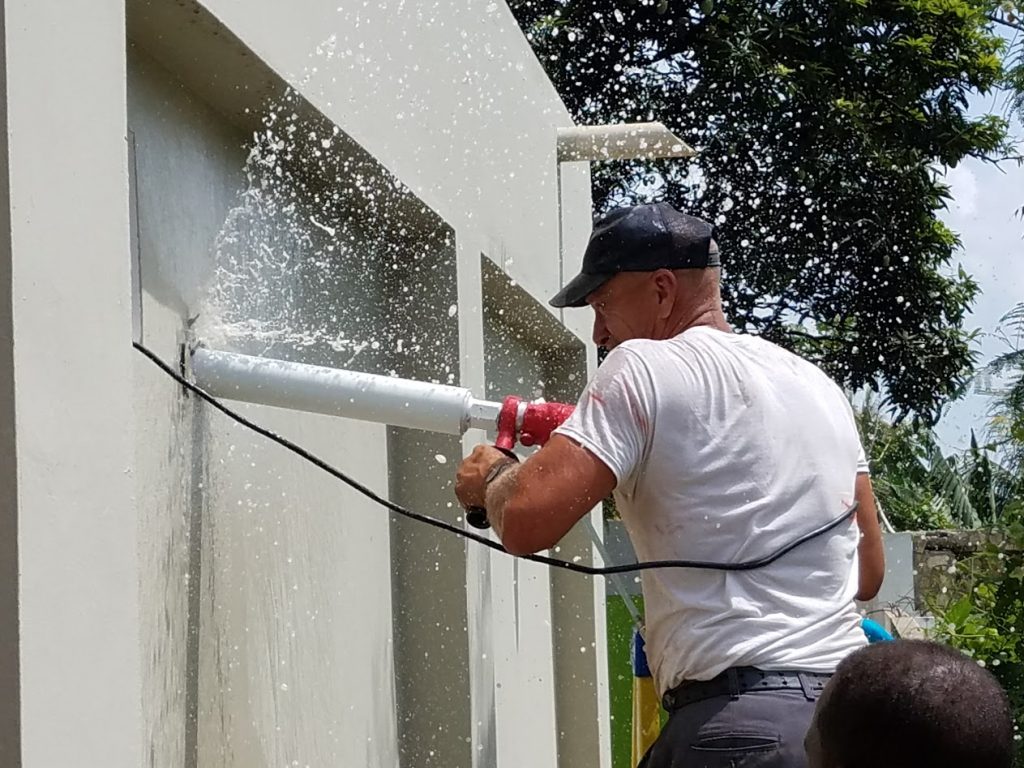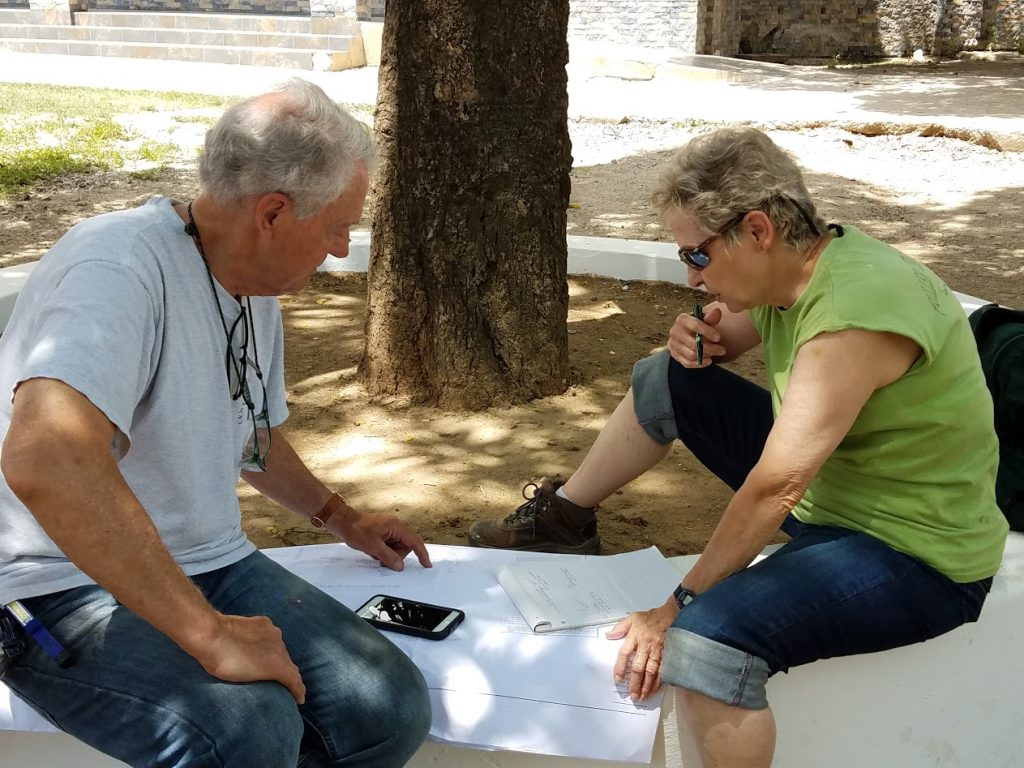Engineering Missions: Healing the World Through Healthcare Facility Design
By Ed Lobnitz
Introduction
In a world where access to quality healthcare remains a privilege for many, engineers, alongside architects and other professionals, are stepping up to bridge the gap between developed and developing nations. Through innovative solutions and dedicated non-profit-affiliated missions, these unsung heroes are tackling complex challenges in some of the most resource-constrained environments. From Haiti to Afghanistan, Kenya to Angola, their work is not just about installing equipment or designing buildings; it’s about transforming lives and communities. This article explores how engineers are changing our hurting world through their contributions to healthcare facilities design in developing countries, highlighting the technical ingenuity and cultural sensitivity required to make a lasting impact.

Electrifying healthcare: The Haiti experience
In the northeast corner of Haiti, near the Dominican Republic border, an orphanage called Danita’s Children faced a monumental challenge. The architectural/engineering design team volunteered to design establish the country’s first and only pediatric hospital, but the lack of reliable power, along with other constraints, threatened to derail their plans. The A/E team recommended designing a new hospital with a comprehensive electrical system. However, financial constraints led to a change in plans, and the team decided to repurpose an existing four-story building on the site.
The engineers tackled the power supply problem head-on, designing a system that included a set of 150 kW generators and a dedicated building for supporting electrical switchgear and solar power equipment. They incorporated a solar power system, including solar panels, installed on an adjacent school building to enhance sustainability. The solar panel configuration was particularly innovative, with half facing east and half facing west, along with a few in the center. This arrangement ensured power generation from early morning until evening, significantly reducing reliance on diesel generators.
The solar system’s backbone consisted of lithium-ion batteries, providing crucial storage capacity to bridge gaps when solar power was unavailable. The entire setup was designed to prioritize power supply to the medical center in addition to supporting power for the rest of the campus, ensuring that critical healthcare services would have uninterrupted power. The team had to balance multiple systems to minimize generator usage and conserve precious diesel fuel, which was very expensive and not consistently available.
The pediatric center and hospital are now fully functional, providing essential healthcare services to the community. The facility spans four stories, each approximately 170×100 feet, housing inpatient care, main hospital functions, a dormitory for visiting medical staff, and long-term accommodation for volunteers. It includes a fully equipped operating suite, a 10-bed neonatal intensive care unit (NICU), and equipment to produce their own oxygen. The project’s impact extends beyond healthcare, as it includes a school providing free K-12 education and daily meals to more than 400 local children, many of whom might not have survived without the organization’s intervention.

Rebuilding from rubble: The Afghanistan challenge
In 2020, a group of engineers and other professionals embarked on a mission to Afghanistan, a country still grappling with the aftermath of prolonged conflict. Their journey from Pakistan to Kabul was fraught with danger, taking 12 hours to cover just 100 miles due to security concerns. This experience underscored the complex situations engineers often navigate in conflict-affected regions.
Upon reaching Kabul, the team encountered a healthcare system in disarray. The main hospital was barely functional, plagued by inadequate electrical power and improper sewage handling. They found an empty building in a village outside the capital constructed for a clinic but it was vacant, needing more essential equipment and personnel. One of the most pressing challenges was the destroyed power grid, with high-voltage power distribution needing complete rebuilding.
Despite these obstacles, the team made progress. They helped set up a “clinic in a box” in the vacant clinic building, providing a template for rapid healthcare deployment in resource-poor settings. They also began plans to redesign and revitalize Kabul’s main arts center, recognizing the holistic nature of community healing.
The team also faced cultural hurdles, such as restrictions on female medical professionals, which complicated staffing solutions for the new clinic. They also encountered the aftermath of recent conflicts, with missile damage affecting power distribution in some areas. The political and interreligious instability eventually limited the team’s ability to complete their planned projects, highlighting the volatile nature of working in conflict zones.

Expanding horizons: The Kenya project
In Kenya, an architecture/engineering-focused missionary group, organized through Engineering Ministries International (EMI), sought help to expand their hospital to add a pediatric facility to serve the children in this very impoverished part of the world. This project showcased how engineers can enhance existing infrastructure while navigating local challenges. The team faced several hurdles, from designing within limited space to upgrading the entire electrical supply system.
One of the secondary tasks was creating a CT scan room within the constraints of the existing building. This required electrical expertise and close collaboration with architects to carve out the necessary space. The team had to clear an existing area, almost like an alleyway between buildings, to accommodate the new room.
The electrical infrastructure presented its own set of difficulties. The existing power and communication systems were already overloaded, necessitating a complete overhaul of the electrical supply to support both the new additions and the existing hospital. The team designed a new generator system capable of powering the entire facility, including the new CT equipment. However, this led to another challenge: finding space for the larger generator.
With no room for the new, more powerful generator, the team had to make a bold decision. They opted to tear down the building housing the old generator and design a new structure that could accommodate the upgraded infrastructure. This decision required close coordination between electrical engineers, architects, and structural engineers, highlighting the collaborative and interdisciplinary nature of such projects.
Connecting the new generator to the existing building proved to be one of the most complex aspects of the project. The team encountered different standards for labeling and organization compared to those in the U.S., leading to confusion about power routing. They had to meticulously trace existing circuits, often resorting to trial-and-error methods like shutting off power to identify connection points.
The project also explored alternative energy sources. Wind power experts analyzed the site but concluded it wasn’t suitable, demonstrating the team’s commitment to thorough assessment in sustainable engineering solutions. Throughout the project, the team lived in apartments on-site, allowing them to work long hours each day to complete the upgrades quickly.
Powering healthcare: The Angola initiative
A mission focused electrical engineer faced unique challenges in upgrading an eye clinic within an existing mission hospital. The eye clinic was established by the non-profit group “Living in Faith” in Tampa. The project was located in Angola, a country still recovering from decades of civil war. The project highlighted the complexities of adapting modern medical technology to environments with unreliable infrastructure and the importance of flexible, innovative solutions.
Upon arrival, the team discovered a clinic struggling with power inconsistencies that threatened patient care. The existing setup relied on American power equipment designed for European power systems, necessitating multiple converters to keep essential medical devices operational. This solution was far from ideal, especially for a facility aiming to provide critical services like cataract surgeries, but it proved that engineering creativity is the heart of missions.
The heart of the problem lay in the clinic’s need to use the hospital’s sole operating room (OR). The unreliable utility power would frequently cut out during surgical procedures, putting patients at risk. While a generator was present, it had been inactive for over five years, and no one on-site had the expertise to revive it. This situation underscored the need for creative technical solutions and knowledge transfer to ensure long-term sustainability.
Tackling the power issue head-on, the engineer devised a multi-pronged approach. With the help of Living in Faith and an accompanying volunteer electrical contractor, they installed an inverter and battery system to provide immediate backup during outages, ensuring that surgeries could proceed uninterrupted. Simultaneously, they took on the challenge of repairing the long-dormant generator, successfully bringing it back to life as a reliable power backup. This dual strategy significantly enhanced the clinic’s resilience against power fluctuations.
Initially, the team had considered implementing a solar power system, given Angola’s abundant sunshine. However, a surprising discovery altered their plans. They learned that the hospital, as a registered healthcare facility, received utility power free of charge. This revelation prompted a strategic pivot, as the financial incentive for solar power diminished in light of the free utility supply. The team also revised electrical wiring systems to support peanut grinding equipment to produce a special peanut-based infant nutritional supplement.
The Angola project exemplified the need for engineers to remain adaptable and responsive to local conditions. Instead of pursuing the originally planned solar installation, the team redirected their efforts to more immediate needs that would directly impact patient care. This flexibility allowed them to maximize their impact within the constraints of time and resources. The engineers worked closely with local staff throughout the project, sharing knowledge and building capacity to maintain and troubleshoot the new systems.
Cultural considerations and adaptive design
Across all these projects, a common theme emerges: the need for engineers to adapt their approaches to local cultures and available resources. This adaptability is crucial for the success and sustainability of healthcare projects in developing nations. Engineers must understand local building practices and available materials, recognize cultural norms that may affect facility design and use, train local personnel to maintain and operate new systems, and balance advanced technology with simplicity and reliability.
In Haiti, the engineer had to design a power system that could function with inconsistent fuel supplies. In Afghanistan, the team needed to consider security implications in their designs. In Kenya, they had to work around existing structures and limited space. Similarly, in Angola, adapting American power equipment to European systems and addressing cultural operational differences were paramount. These experiences highlight that successful engineering missions are not just about technical solutions; they’re about creating systems that local communities can sustain and operate long after the engineers have left.
Conclusion: The ripple effect of engineering missions
The impact of engineering missions in healthcare facilities extends far beyond the immediate provision of medical services. These projects create ripple effects that transform entire communities. In Haiti, the pediatric hospital saves lives and provides education and nutrition to children who might otherwise have no future. Even small successes like the “clinic in a box” bring hope to war-torn communities in Afghanistan. The expanded hospital capabilities in Kenya mean better healthcare for a broader population. In Angola, ensuring continuous power for surgeries and adapting infrastructure to local needs significantly enhances medical operations and community trust.
Engineers embarking on these missions often find that the experience transforms them as much as it does the communities they serve. They learn to innovate under constraints, respect and incorporate local knowledge, and see their work’s profound impact on human lives.
As our world continues to face healthcare disparities, the role of engineers in bridging these gaps becomes ever more critical. Engineers are changing our hurting world through their ingenuity, adaptability, and compassion, one healthcare facility at a time. Their work reminds us that with the right combination of technical skill and human empathy, we can overcome seemingly insurmountable challenges and bring hope to those who need it most. To become a mission-oriented engineer or engineering firm, contact EMI, Living in Faith, local religious missionary organizations, and others to help those who need it the most.
Ed Lobnitz is retired principal/senior electrical engineer from TLC Engineering Solutions. He can be reached at ed.lobnitz@gmail.com.
